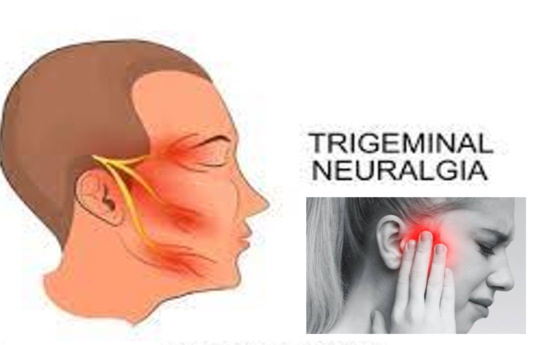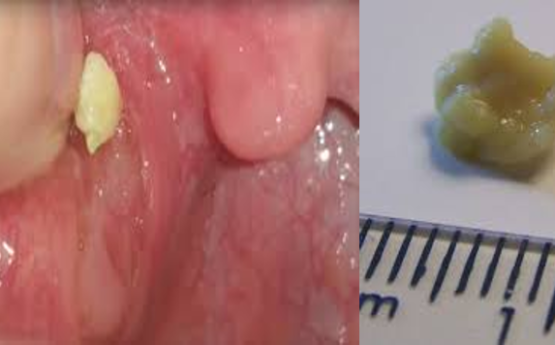TRIGEMINAL NEURALGIA
 Trigeminal neuralgia is a long-term disease that causes sharp pain in all or part of the face. It starts with mild stimuli from brushing, shaving applying makeup, etc. Initially, you may feel short, slight attacks. But trigeminal neuralgia can develop and cause longer, more frequent sessions of sharp shooting pain.
Trigeminal neuralgia is a long-term disease that causes sharp pain in all or part of the face. It starts with mild stimuli from brushing, shaving applying makeup, etc. Initially, you may feel short, slight attacks. But trigeminal neuralgia can develop and cause longer, more frequent sessions of sharp shooting pain.
Women are more commonly affected than men and affect the elderly age group of above 50 years.
Symptoms:
It presents with one or more of these forms. Pain is severe, shooting, or stabbing that may feel like an electric shockwave. Frequent Episodes of numerous attacks that last for days, weeks, months, or longer. Some people have no pan in certain stages. This nerve pain is generated by incidents such as touching the face, chewing, speaking, or brushing.
Pain is seen in areas, supplied by the trigeminal nerve, including the teeth, gums, lips, cheek, and jaw. At a time, pain is seen in one side of the face. Even the pain can be present on both sides. As the history prolongs the incidents will be frequent and is more severe.
Causes of Trigeminal neuralgia
- can happen due to age factor
- disorder that damages the myelin sheath, protecting certain nerves including multiple sclerosis.
- Any abnormal mass of tissue, pressing the trigeminal nerve
- Trigeminal neuralgia due to a brain tumor or other anomalies.
- In some cases, surgical injuries, stroke, or facial injures, maybe the reason for trigeminal neuralgia.
Your doctor will diagnose trigeminal neuralgia, mainly based on your presentation of the pain, including type. Pain-related to trigeminal neuralgia is sudden, shock-like, and short-term. The segments of your face, that are suffering from pain, will tell your doctor if the trigeminal nerve is involved. Trigeminal neuralgia-related pain, usually appears by, slight stimulation of your cheeks, like from eating, talking, or maybe encounter a cool breeze.
The medicines doctors typically prescribe, to treat trigeminal neuralgia were originally formed to treat epilepsy. Carbamazepine, which is the most common antiepileptic medicine, given for trigeminal neuralgia. Trigeminal neuralgia surgery, is served for people who still experience devastating pain, despite the best attempts to manage their condition with medication.
 Tonsil stones, or Tonsilloliths, are hard yellow-white deposits, which are present on, or inside the tonsils. It’s common for people with tonsil stones, to have no symptoms. Tonsil stones aren’t easily visible. They may be in varied sizes and shapes.
Tonsil stones, or Tonsilloliths, are hard yellow-white deposits, which are present on, or inside the tonsils. It’s common for people with tonsil stones, to have no symptoms. Tonsil stones aren’t easily visible. They may be in varied sizes and shapes.
Tonsil stones, rarely cause any health complications. They may grow into large sizes, which can cause your tonsils to swell. They may cause a distinct foul smell.
Your tonsils are made up of tunnels, crevices, and pits called tonsil crypts. Different types of debris, such as mucus, saliva, dead cells, and food, can get entrapped in these sacks and build up. Bacteria and fungi feed on this, build-up, and cause a distinct smell.
Over the period, the debris hardens into a tonsil stone. Some people might have only one tonsil stone, whereas others have many minor stone formations.
The most common symptom, the patient experiences is halitosis. If the tonsil stones are left untreated, bacteria continue to grow and increase the swelling of the tonsillar tissue.
Symptoms of discomfort, while swallowing, are usually experienced with tonsil stones, that have gone undiagnosed and untreated. Moreover, patients can experience ear pain, due to the inflammation of the tonsils.
When studying the bacteria causing inflammation of the tonsils, researchers have found both aerobic and anaerobic bacteria.
One study reported that some of the anaerobic bacteria produce volatile sulphur compounds such as hydrogen sulphide and methyl mercaptan.
The volatile sulfur has been implicated in halitosis.
Reducing the number of bacteria, in the oral cavity, will prevent tonsil stones. Dentists can advise patients, to have meticulous home care with electric toothbrushes, flossing, and rinsing with sulphate-free products.
Avoiding carbonated drinks will reduce the risk and growth of tonsil stones.
Removing tonsil stones chairside can be done with an air/water syringe, or a tongue depressor. Lightly use the air/water syringe to spray the stones, out of the tonsillar folds, while using the suction to eliminate debris. The back of a tongue depressor, can also be used, to lightly push the tissue down, around the stone, to then lift the stone up and out.
Long-standing symptomatic tonsil stones are removed surgically which are a vital part of the immune system.
